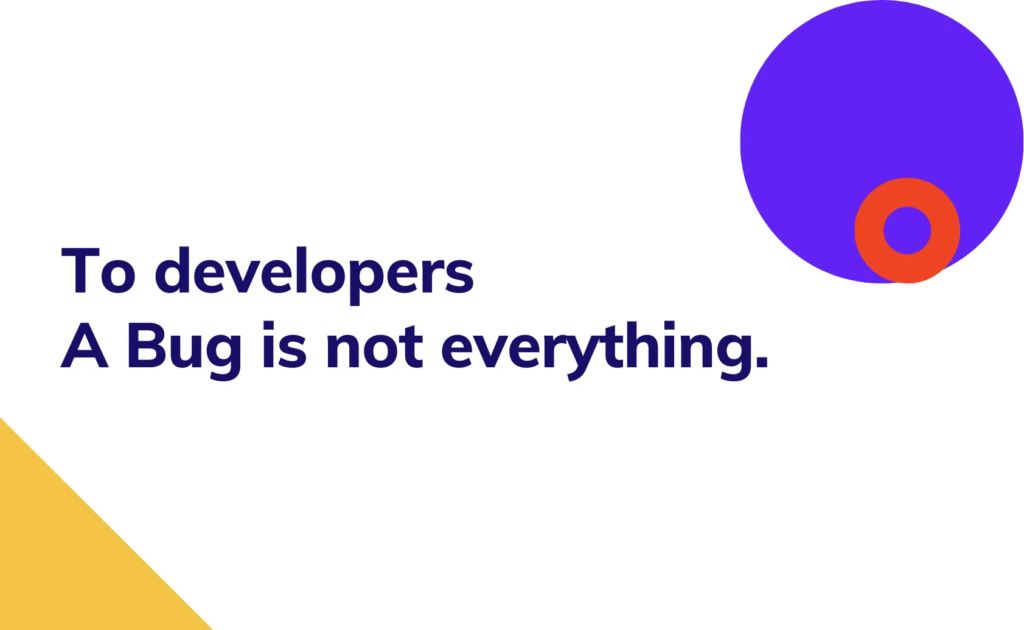Software development shouldn’t worry so much about bugs. Bugs are inevitable, but they aren’t the monsters many perceive them to be. Bugs are part of the creation for experienced developers. However, when a bug affects production, the stakes are higher. Especially when it leads to incorrect data, the process moves from simply fixing code to managing the aftermath of data inconsistencies. This distinction between fixing bugs and fixing data defines the realm of a senior developer.
Bugs as Part of Development
Bugs can manifest unexpectedly, from minor UI issues to critical data mishandling. Recognizing that bugs are normal helps developers remain focused and prioritize finding solutions. Bugs often represent an opportunity to learn, improve, and refine systems.
Why Bugs Occur
- Codebase Complexity: As applications grow, so do the interdependencies, making it challenging to anticipate every scenario.
- Integration Issues: Third-party APIs, libraries, and services introduce uncertainties.
- Human Error: Developers, like all humans, are prone to making mistakes.
Experienced developers approach bugs as challenges to address, not failures. They proactively implement logging, error handling, and thorough testing frameworks to reduce the impact of bugs when they arise.
The Production Zone: Where Bugs Matter Most
In development environments, bugs are expected and handled with relative ease. However, in production, the stakes are amplified. Bugs in live systems can lead to revenue loss, customer dissatisfaction, or regulatory penalties.
When Bugs Impact Data
Bugs that compromise data integrity in production pose a unique challenge. Unlike functional bugs, which may require a hotfix or patch, data issues require careful investigation and correction. Incorrect data can lead to:
- Misleading analytics.
- Poor decision-making by users.
- Loss of trust in the application.
For example, if a financial application miscalculates balances due to a bug, the incorrect data must be identified, analyzed, and rectified — a process that demands expertise beyond programming.
Fixing Bugs vs. Fixing Data
Fixing a bug involves identifying the code and deploying a corrected version. Fixing data, however, requires much more. It involves:
- Understanding the Impact: where and how the bug corrupted the data.
- Isolating Affected Records: Determining the scope of the incorrect data.
- Restoration or Adjustment: Repairing or recalibrating data to restore integrity.
Why Fixing Data is Challenging
- Scale of Impact: A bug may alter thousands or millions of records.
- Historical Dependencies: Some systems rely on historical data that is now flawed.
- Precision Required: Incorrect fixes can exacerbate the problem.
Senior developers who have maintained legacy systems or worked in high-stakes environments often excel in these situations. Their experience provides insight into the intricacies of both systems and data management.
Plan for Managing Data Issues
- Logging and Audit Trails: Every critical problem should have a log. That makes it easier to trace an error. Audit trails provide a clear picture of what data was modified and when.
- Database Backups and Recovery: Regular backups ensure a stable data version exists. In case of essential corrupted data, developers can restore from a backup while addressing the root cause of the bug.
- Data Validation and Monitoring: Automated systems to validate and monitor data consistency help catch anomalies early. Machine learning models can even predict potential inconsistencies.
- Communication with Stakeholders: Developers should work with business teams to understand the importance of data and how best to restore its accuracy. Transparent communication builds trust.
- Rollback Mechanisms: When deploying new code, ensure rollback mechanisms are ready to reverse changes if a critical bug is detected quickly.
Lessons from Experience: “I’ve Fixed Many Bugs”
Senior developers offer skills in production environments. Through years of maintaining and improving applications, they develop skills in:
- Analyzing and understanding unfamiliar code.
- Debugging effectively under pressure.
- Collaborating with teams to resolve complex issues.
Tips from the Senior developers
- Stay Calm: Production bugs are serious, but panicking will only cloud judgment.
- Reproduce the Issue: If possible, replicate the bug in a controlled environment.
- Start Small: Isolate a small subset of affected data to test fixes before scaling.
- Document Everything: Write down what caused the bug, its effects, and the steps to resolve it. That is why the developer should update documents when the business changes.
How do you minimize bugs as much as possible?
The developers don’t fear bugs — they are facing them. They design systems that can handle failures gracefully and recover quickly.
Key Principles
- Test-Driven Development (TDD): Writing tests first ensures coverage of every edge case.
- Defensive Programming: Forecast misuse or unexpected inputs.
- Continuous Learning: Stay updated on tools and frameworks.
Finally, a developer’s relationship with bugs defines their growth. Learning bugs naturally while striving for excellence in fixing them ensures long-term success.
Conclusion
To developers, a bug is not everything — it’s a challenge. Whether debugging in production or fixing corrupted data, the skills and mindset of a senior developer make all the difference. The bugs can improve systems, user experiences, and problem-solving skills with the right plan and tools.
Finally, fixing code is easy; fixing data takes another skill level. For those with years of experience, the confidence to find such issues defines their mastery of the craft.

